Closing the Gap: Protecting Overlooked Bird Species
Conservationists hope to begin protecting overlooked bird species by identifying which birds still lack protected areas.
ABC has always made preventing bird extinctions a top priority. We've made great strides toward this goal with the help of our partners and other conservationists, and to date, we've supported the establishment of protected areas for 60 species of highly threatened birds.
In one example, the Rusty-faced Parrot was downlisted from Critically Endangered to Vulnerable, due in part to creation of the Colibrí del Sol Reserve in Colombia. Our progress proves that with sufficient resources and political will, we can reduce the threats that drive species toward extinction. We can enable the populations of the Americas' rarest birds to stabilize and recover.
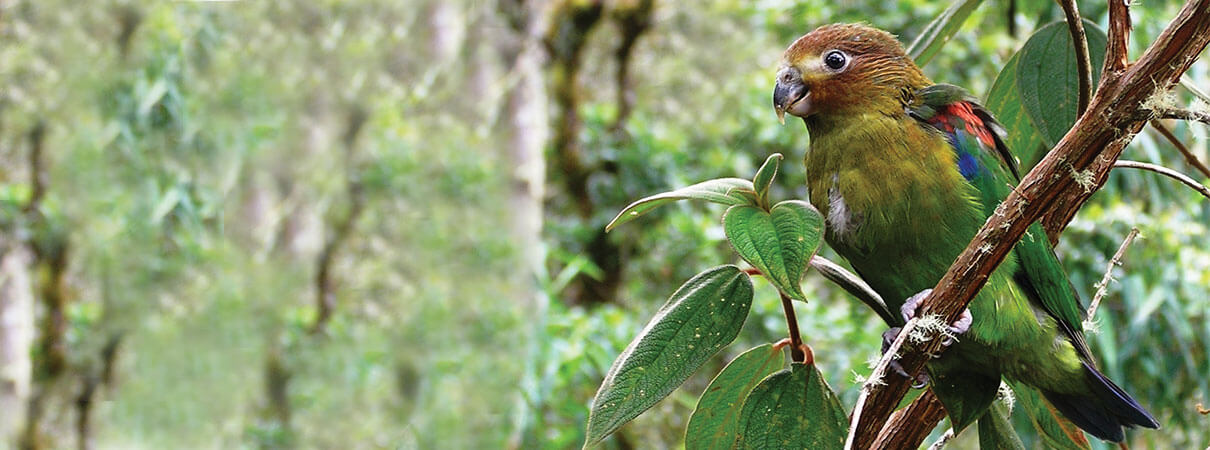
Rusty-faced Parrot. Photo by Fundación ProAves
But our work is hardly finished. The International Union for the Conservation of Nature (IUCN) Red List of Threatened Species still includes hundreds of bird species in the Americas that are classified as Endangered, Critically Endangered, or so poorly known — “Data Deficient,” in scientific terms — that they may well be Endangered too. Some of these species are at least partially protected in reserves or benefit from ongoing conservation efforts; others are not.
To address this disparity, ABC is conducting an analysis to determine which species are being overlooked. We are asking two key questions: Which bird species are on the brink of extinction due to habitat threats, but occur mainly outside protected areas? And where are the most important sites that require protection to safeguard these overlooked species?
Sorting Through the Data
According to preliminary results gathered by ABC researchers and international partners, 317 Endangered, Critically Endangered, and Data Deficient bird species are found within ABC's focal geography (North America, Central America, South America, the Caribbean, Hawai'i, and U.S. territories in the Pacific).
Roughly 11 percent of these 317 species have not been seen in recent years or are likely to be extinct, and 2 percent are species of swifts and storm-petrels that we know little about — so little, in fact, that it is hard to determine their primary threats or even confirm their status as Endangered. That leaves 87 percent, or 276 species, needing conservation action to address the threats driving them toward extinction.
By far, the most common threat to these species is habitat loss (79 percent), followed by invasive species (16 percent). Wildlife trafficking, hunting, bycatch in fisheries, persecution, or combinations of other threats make up the remainder (5 percent).
“It's important that we know which species are the ones in greatest need,” says ABC President Mike Parr. “We don't want to overlook any critical species. It's hard to see the ‘holes' when you're looking at a list of birds, so we're trying fill in those gaps with this analysis.”
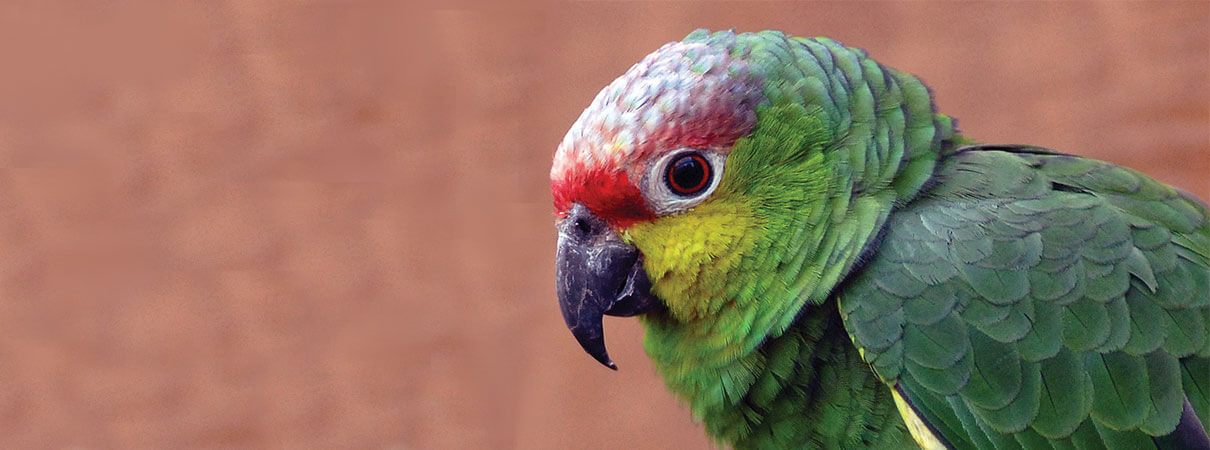
Lilacine Amazon. Photo by Steve Wilson
Addressing Needs of Gap Species
“Gap species” can be found from the marshy outskirts of a Brazilian megacity to the dry forests of western Mexico.
Since the majority are clearly threatened by habitat loss, one key strategy is to protect more of their habitat — at least enough to safeguard a potentially viable population of 500 individuals. If the total population is less than 500, we'll protect as many of the surviving birds as possible. Depending on the species and threats, 500 may be more than is needed to secure the population from the threat of immediate extinction (both the California Condor and Whooping Crane recovered from low double digit populations), but this can also act as a medium-term population goal for the recovery of species with smaller current populations.
Protecting habitat for the rarest birds has been at the center of ABC's international efforts for decades. With our partners in Latin America and the Caribbean, we've enhanced habitat protection across more than one million acres by creating reserves, establishing easements, and restoring the forests and wetlands these rare birds need to survive.
A perfect example is the Yunguilla Reserve in Ecuador, managed by our partner, Fundación Jocotoco. Before the reserve was established in 2004, the Pale-headed Brushfinch occurred entirely outside protected areas, numbered only 30 individuals, and was considered Critically Endangered. The reserve — established with ABC support — now protects almost the entire population of the brushfinch, which now numbers more than 200 individuals. The species has been downlisted to Endangered as a result of this sustained conservation action and continues to recover its range and population.
As our “gap analysis” continues, ABC and collaborators plan to publish a complete list of the under-protected bird species of the Americas, along with maps that show areas in need of protection as a first line of defense against extinction. Working with scientific and conservation partners and governments across the Western Hemisphere, we aim to use this analysis to fill in the protection gap for the birds that need it most.
It's an exciting evolution in our 20-year effort to “safeguard the rarest” — and one that we feel sure will bring many more species back from the brink.
Meet a Few of the Gap Species: Five Profiles
By working to establish new reserves for some of these gap species, we will help their populations stabilize and thrive.
SÃO PAULO MARSH ANTWREN

São Paulo Antwren. Photo by Elvis Japão
The reclusive São Paulo Marsh Antwren skulks around wetlands on the outskirts of Brazil's largest city. The antwren was described by scientists as a new species in 2013, and IUCN evaluated the species as Critically Endangered in 2016. Research suggests it has likely lost more than 74,000 acres of its historic habitat as a result of the conversion of wetlands to agriculture and other uses. The current population estimate is 250 to 300 individuals.
In 2017, ABC and our partner SAVE Brasil launched an effort with Brazil's Guararema municipality and other local conservationists to establish the first protected area for a population of this species. Given enthusiastic local support for the effort, we hope that Guararema will establish a series of reserves that will protect this bird throughout much of its small range.
LILACINE AMAZON
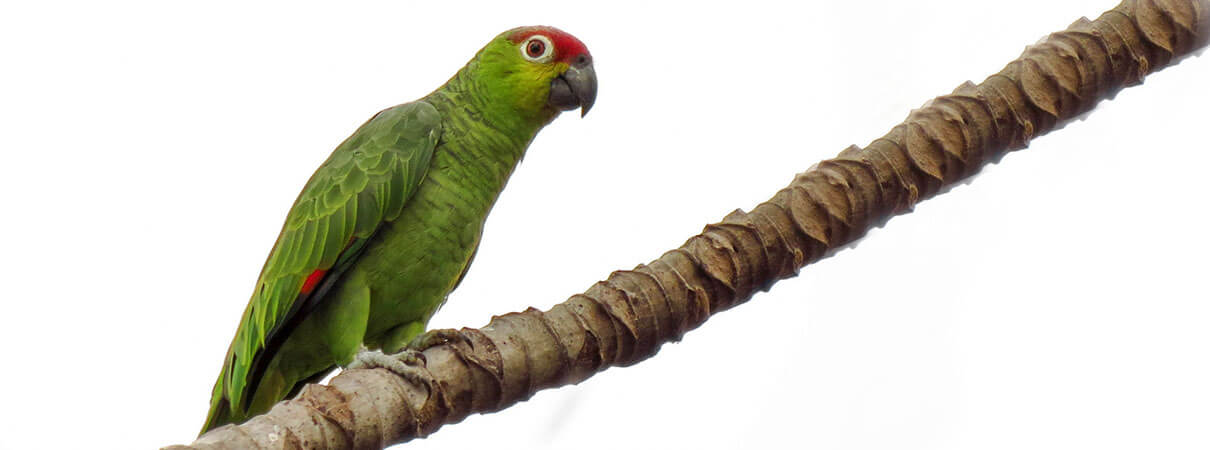
Lilacine Amazon. Photo by Daniel Arias Cruzatty
This parrot was recently recognized as its own species, split from the more widespread Red-lored Amazon; Lilacine has a less striking head pattern and a dark (not two-toned) bill. Lilacine Amazons live only in western Ecuador, congregating at communal roosts at night and fanning out to forage during the day.
Fundación Jocotoco and local researchers, with support from the U.K.-based Chester Zoo, have been studying this species to learn how we might best conserve it. They have identified the foraging and roosting areas of what is likely the bird's largest population. Because the dry forest roosts are unprotected and under pressure for agriculture, ABC and Jocotoco are fundraising to acquire these areas. We're starting with critical roosting sites and aim to create the first reserve for this unique and colorful amazon.
GRAY-BELLIED COMET
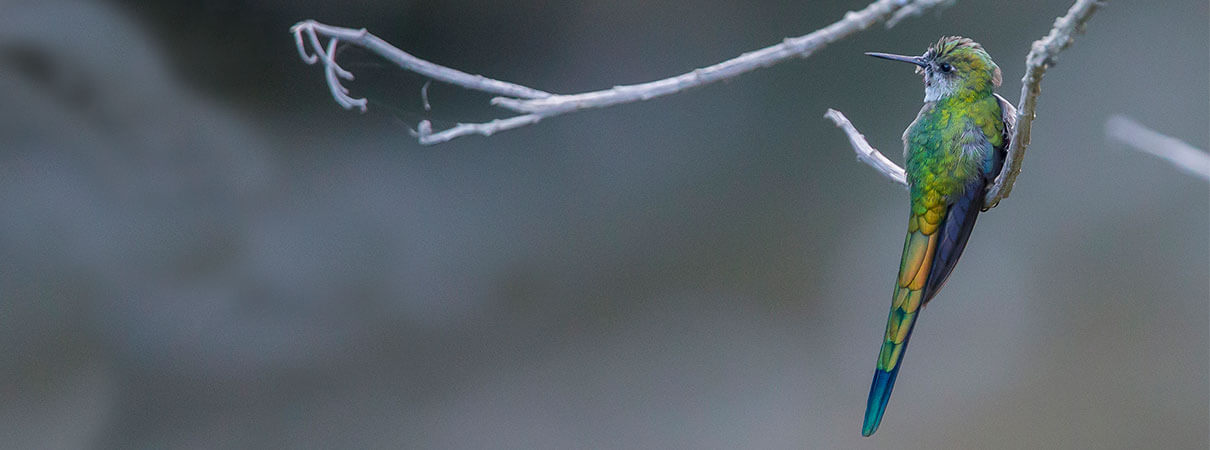
Gray-bellied Comet. Photo by Björn Anderson
The Gray-bellied Comet is one of several spectacular threatened hummingbirds that live in small enclaves in northern Peru. (The others are the Royal Sunangel, Purple-backed Sunbeam, and Marvelous Spatuletail.) A bird of arid mountain slopes and canyons, the comet is an important pollinator of cacti, shrubs, and trees. All four of these hummingbirds are threatened by habitat loss, and the comet and sunbeam occur exclusively outside protected areas.
Working with our Peruvian partner ECOAN, ABC helped to establish the world's only reserve for the spatuletail and engaged local residents in a more widespread habitat restoration effort and awareness campaign. We also supported creation of the Abra Patricia Reserve, which includes important habitat for the Royal Sunangel. Now, we are exploring how to create additional reserves for these species — with an eye to establishing the first Gray-bellied Comet reserve later this year or next, along with engaging local communities in habitat restoration.
YELLOW-HEADED BRUSHFINCH and TOLIMA DOVE
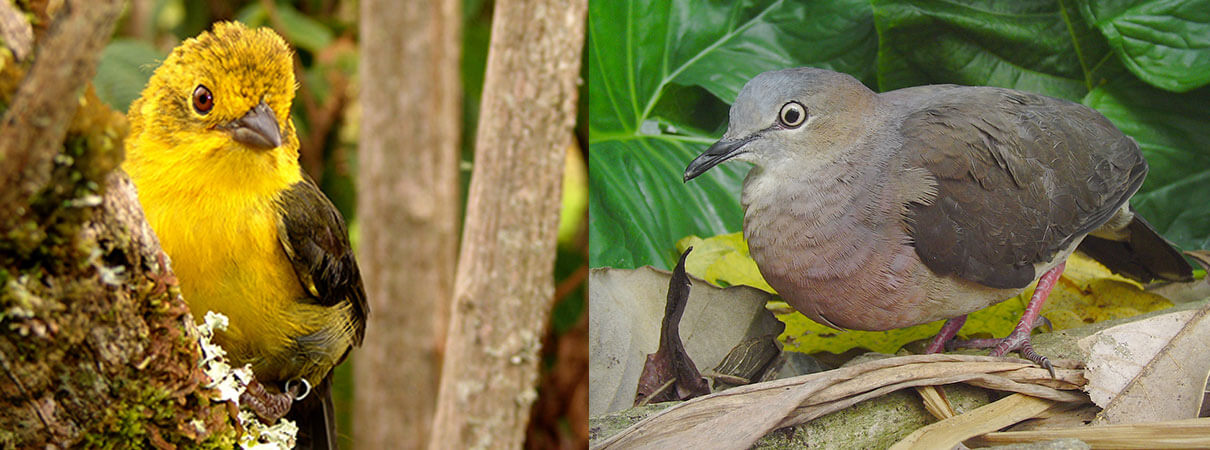
Left: Yellow-headed Brushfinch. Photo by Fundación ProAves; right: Tolima Dove. Photo by Fundación ProAves
These two threatened species occur in the mountains of southern Colombia and can sometimes be found in the same forests. The Yellow-headed Brushfinch was known well into the 20th century as the Olive-headed Brushfinch; in the 1980s, additional research and field work led to its more-colorful common name.
The Tolima Dove spends much of its time on or near the ground, searching the forest floor for seeds, fruits, and insects, and playing a key seed dispersal role that contributes to reforestation efforts. It is best distinguished from other closely related species by its voice and tail pattern.
Most of the populations of both the brushfinch and the dove occur outside existing protected areas; in the case of Tolima Dove, the Colombian organization SELVA estimates that no more than 2 percent of the dove's range is currently within existing protected areas. Working with SELVA, we are creating improved maps of the dove's range and habitat, and identifying the most important places to protect.
We'll next hold workshops with local communities and experts to determine the best options for creating protected areas for these birds. It's a great opportunity: While many of the birds in our analysis are isolated and require separate reserves to protect stronghold populations, these two may offer a rare opportunity to create one reserve for two species.
 | Daniel Lebbin is ABC's Vice President of Threatened Species. David Wiedenfeld is a Senior Conservation Scientist at ABC. |


















































